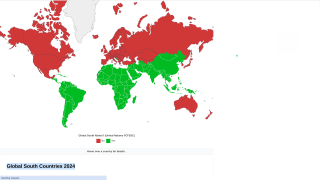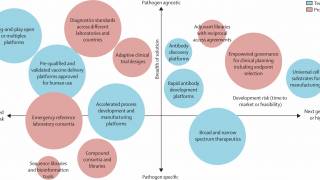Innovative Vaccine Technologies Are Disrupting Disease X

Vaccines are one of our most potent tools against infectious diseases, stated GAVI, the Vaccine Alliance.
Vaccines enabled the eradication of smallpox, and they have helped to reduce the number of polio cases by more than 99% since 1988, saving more than 13 million children from paralysis, add this editorial by Melanie Saville, Director, Coalition for Epidemic Preparedness Innovations (CEPI) published on February 11, 2021.
Excerpts from Saville’s editorial continue below.
‘There is no doubt that we are now in a historic moment vaccinology, but to sow the seeds of future progress, we need to understand that the achievements of recent months did not come out of the blue. They have been made possible because of early investment into the threat caused by emerging infectious diseases and detailed analysis of previous pathogens.
In particular, the success in fighting COVID-19 builds on understanding two closely related coronaviruses, SARS and MERS.
CEPI’s role in these endeavors has been critical. It allocated more than $140 million to the development of MERS vaccines, including supporting early work using the Oxford ChadOx platform. When COVID-19 struck, it could redeploy much of this effort to focus on the new threat.
The fact that scientists were able to design highly effective COVID-19 vaccines within days of the viral sequences being released was due to earlier work on understanding how to target the Spike protein that studs the surface of all coronaviruses.
The exceptionally rapid progress seen in 2020 also reflects years of effort researching and developing new vaccine platforms, most notably mRNA. This approach represents a landmark shift because it uses an easily replicated code-based chemical synthesis process.
Making mRNA vaccines is fast, adaptable, and highly scalable – a step change from traditional biological manufacturing, which is slow and often challenging.
This mRNA technology has been validated at just the right time – at the height of a global pandemic – but it also offers great hope for the future since it could be used to tackle many other pathogens.
The unique ability of CEPI to invest in pandemic preparedness projects and coordinate the development of assets for the whole world has allowed it to establish the world’s most extensive portfolio of vaccines against COVID-19. But it does not stop there.
CEPI has also been instrumental in assisting with the expansion of manufacturing and building a network of laboratories to standardize vaccine assessment and create a new collaborative task force to assess the impact of emerging viral strains on vaccine effectiveness.
The world must continue to pool resources and share risks in this way for the future. Previously unknown viruses pose a growing threat in today’s interconnected world, with the number of undiscovered animal viruses thought to be capable of transmission to people estimated at more than 500,000.
By broadening our investments to understand other viral families from which epidemic diseases are likely to emerge and leveraging powerful vaccine technologies like mRNA, viral vectors, recombinant proteins, and adjuvants, the world can do better next time.
While it is not possible to prepare a vaccine for every virus ahead of time, we can design a global infrastructure and invest in new technology that speeds up the vaccine development process.
That means, with the right level of ambition and appetite for reform, we can collectively respond to the global threat these diseases pose and, in the future, prevent another global catastrophe like this one,’ concluded Saville’s edited editorial.
Click here to learn how the world must prepare for the next pandemic.
PrecisionVaccinations publishes research-based news.
Our Trust Standards: Medical Advisory Committee






